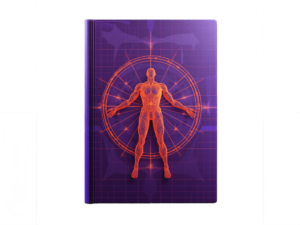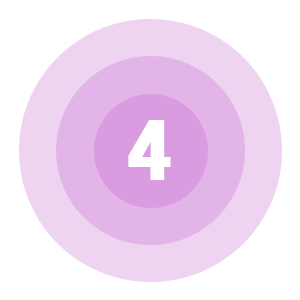Getting Started
The Quickstart Guide
The human body system, not too dissimilar to mechanical organizational structures, tends to display seemingly complex and disconnected errors when its maintenance is neglected. However, a trait that sets biological systems apart from mechanistic systems is the ability to self-repair. This is assuming that acceptable internal environmental conditions are met and cellular resources are aplenty.
Once self-repair is no longer “economically feasible”, biological errors (fatigue, injuries, or diseases, etc.) arise as a consequence of poor living conditions and infrequent maintenance (self-care).
Occasionally, these errors can lead to serious harm within the system and immediate therapeutic or medical intervention is required to prevent further dysfunction. If we’re lucky, the biological equivalent of turning the power “off and on again” is all the body needs to get back into self-repair mode.
So… What might these theoretical “off and on again” methods be?
Step #1: Self Diagnosis
Use this list to assess areas where you may have unfulfilled psychological and physiological requirements, before proceeding to the next step, or attempting to use more extreme intervention. Typically, if you can honestly check off about 75% of the listed items, you should be capable of obtaining the benefits of the interventions in Step #2.
As the human body is biological, it is incredibly resilient and can handle a fair amount of neglect before things go wrong. Going through this list when you feel “down” is an effective way of identifying the origin of discomfort and to realign yourself before mental and physical ailments begin to take hold.
Do you:
- Know how to breathe with your diaphragm
- Breathe through your nose (exception during high intensity exercise)
- Give yourself 7-9 hours sleep opportunity every night
- Feel well rested in the morning
- Spend at least 15 minutes outside, exposed to the sun
- Eat routinely 4-5 days a week
- Eat a wide range of colorful, cruciferous, and leafy greens and mostly free-range and/or grass-fed meat
- Try to avoid high-fructose corn syrup, trans-fat, and vegetable oil laden foods
- Walk for at least 15 minutes each day in the early morning sunlight
- Exercise regularly (including exercises such as aerobic, martial arts, yoga, mobility, dancing, sports, and/or strength training at least 3-5 times per week)
- Socially interact with family and/or friends in a leisurely/carefree environment (not always problem focused)
- Have any hobbies or interests that allow room for personal growth
- Live and work in environments free of pesticides, mold, and excess pollution
Step #2: Intervention
If you have checked off at least 75% of the items in Step #1, you should be capable of generating results from this section. These steps build resilience, potentially improving functionality within the body, and reducing the likelihood of suffering immune, physiological, and psychological dysfunction after exposure to mild stressors.
We suggest only trying one of these methods at a time, for about 3-4 weeks (unless otherwise stated), before adding a new one. This helps to establish an isolated habit, prevents you from being overwhelmed, and allows a greater understanding of the specific intervention. The goal is to understand how each of these activities affects your body so that you can use them diagnostically.
Don’t forget that these activities induce mild stress, that may result in making health problems worse for the chronically stressed individual. It is also possible that the health benefits will feel almost miraculous. Increasing the likelihood of becoming obsessively reliant on the methods, rather than dealing with the actual cause of the original health issues.
Try:
- Intermittently fasting (5 days off, 2 days on) for 2-3 weeks or fasting for 3 days (once per month)
- Mouth-taping during sleep and consciously nasal breathing throughout the day
- 3-4 rounds of the Wim Hof Method in the morning
- A 5 minute cold shower/cold soak (can be after a warm shower)
- A few sauna sessions per week
- 5-15 minutes of vipassana or transcedental meditation per day
- Practice gratitude by using a daily gratitude journal
- Use an elimination diet to heal the gut lining and to identify foods you are sensitive to
- Practice some form of mobility and diagnose bodily imbalances for more targeted movement
- Bodyweight HIIT training if there are no pre-existing injuries
- List all of your daily habits and replace undesired habits with subjectively better ones (time and place established)
- Join some sort of community group that takes part in an activity that you enjoy
- Prioritize time to learn something that you enjoy, without placing expectation on yourself
- Turn off all blue-light producing screens after 9pm; take a bath to relax the muscles, calm the mind, and adjust thermoregulation; and wind down with physical activities like yoga, mobility, and foam rolling
Step #3: Analysis
After going through the checklist in Step #1 and testing the methods in Step #2, you should be able to evaluate them subjectively. Think about what worked for you and why you believe they did. Could the effects from Step #2 be attributed to confounding variables?
By using the measurement techniques below, you should be able to find the right methods that help you to detect when your body is starting to go wrong and to reduce health issues in an effective manner.
Try:
- Keeping a food diary
- Using a smart watch or other device to track sleep quality
- Tracking exercise routines and performance
- Using a step counter app or smart watch
- Getting a genetic test and analyzing it for genetic predispositions to diseases and nutrition specifications
- Taking body measurements, such as body fat percentage, lean body mass, muscle and waist circumferences
- Tracking gratitude, daily summaries, and goal tracking in a journal or phone app
- Track performance while using nootropic/health supplements
Summary
I’m sure it goes without saying that results will vary, depending on things such as your current lifestyle, health condition, medications, and program consistency. Also, you may have noticed that each suggestion on this page has a section of its own, listed somewhere in the drop down menu above.
If you would like to learn more about each section, pick and choose your own path from the menu. If you feel like you already have a solid background in health and fitness and just want a list of tasks to follow, click one of the cheat sheets below.
Alternatively, there is the option of choosing from one of the three different levels of comprehensive habit-based schedules on the home page. This option is the most effective way of integrating beneficial lifestyle factors consistently. Rather than the typical “Type-A” method of attempting to take on the burden of becoming an expert in each discipline. Learning is encouraged, but pain is unnecessary.




